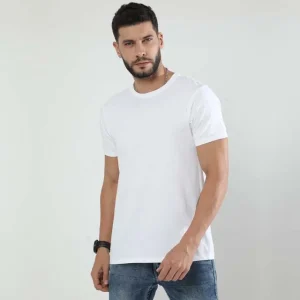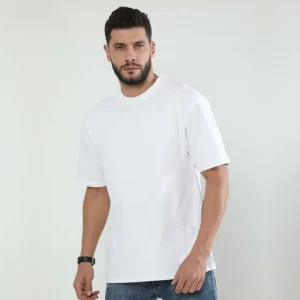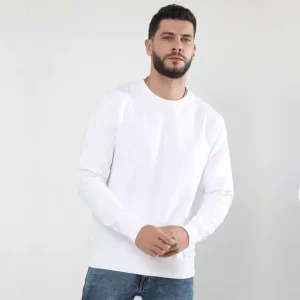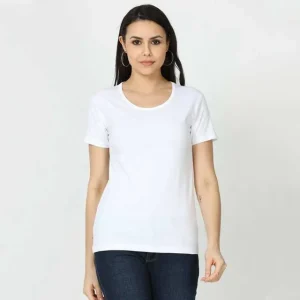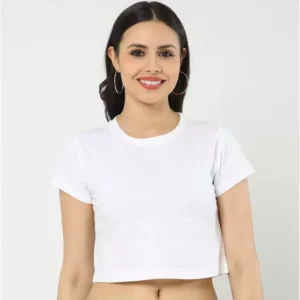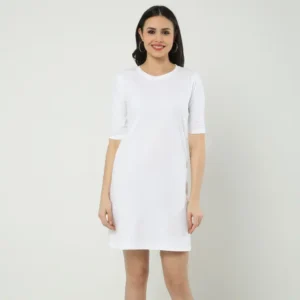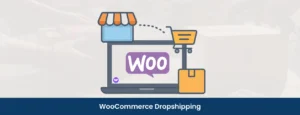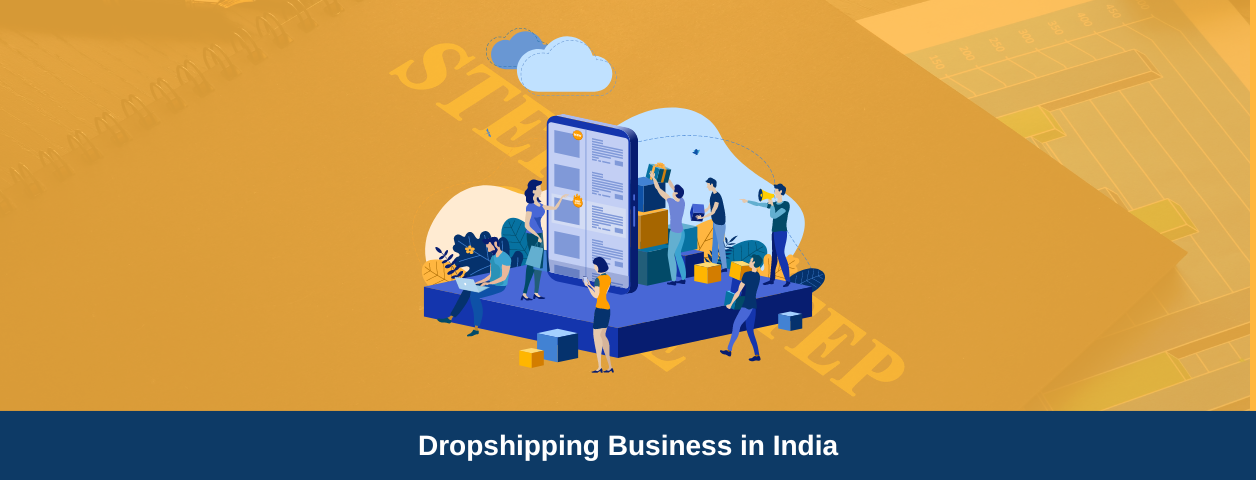DTG, or Direct to Garment, is a digital printing technology that uses a specific printer to apply ink directly to a garment. This printing method, DTG Printing, makes fashion more sustainable by Print on Demand options.
DTG printing achieves very high resolutions and details. Complex Graphic designs, photos, and texts can be printed without coating the number of colours and quantity to be printed. It easily handles multiple colours without complex adjustments.
It just prints any design fed into the printer with the same quality as the print file. This is useful for personalised products and modern e-commerce websites. For smaller runs, DTG is more cost-effective than conventional screen printing.
1. What is the full form of DTG?
The full form of DTG is Direct to Garment (DTG) printing, which is a modern digital printing technique used to apply high-quality, full-colour designs directly onto various types of fabric, primarily garments such as t-shirts, hoodies, and other apparel items. Unlike traditional printing DTG printing allows for intricate and detailed designs to be printed directly onto the fabric using specialized inkjet printing technology.
2. How does Direct To Garment (DTG) work?
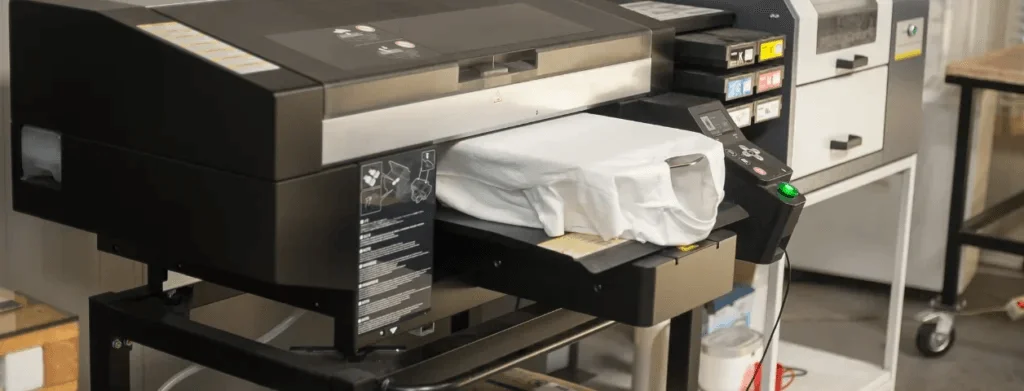
DTG printer works in 3 steps which sounds easy yet requires years of expertise
- Firstly, the fabric is pre-treated with a liquid that is an adhesive to the ink.
- Then, the garment is loaded on the platen, and the ink is sprayed as per the design.
- The apparel is heat pressed or cured for long-lasting print.
3. What are the benefits of DTG printing?
Here are the benefits of choosing DTG printing for your print on demand store.
- Vibrant Colours: DTG printing allows for a wide range of colours, making it great for generating eye-catching graphics.
- Detailed Prints: DTG printing’s sophisticated inkjet technology offers accurate and complex details, capturing every element of your design.
- Soft Touch: DTG printing uses water-based inks that enter the cloth, resulting in designs that are comfortable to wear.
- Flexibility: DTG printing is versatile since it is used on various fabrics, including cotton and cotton blends.
4. What is meant by direct to garment printing?
Direct to Garment printing is a digital printing technique that involves printing the design directly onto the fabric using specialized inkjet printers. The printer sprays the ink onto the garment, creating the desired design.
DTG printing allows for intricate designs and detailed artwork with a wide range of colours. It can accurately reproduce gradients, shading, and intricate details like photographs.
5. What are DTG printing examples?
DTG printing involves printing the design directly onto the fabric for example T-shirts, hoodies, hats, and other apparel products using specialized inkjet printers.
6. Does DTG have to be on 100% cotton?
DTF printing works well on a wide range of fabrics, including cotton, polyester, blends, denim, canvas and more, while DTG printing is best for 100% cotton or cotton blend fabrics.
7. Is DTG better than embroidery?
DTG printing is great for complex designs with many colours or gradients, offering a smooth finish. On the other hand, embroidery adds texture and dimensionality to designs and is ideal for simpler designs or achieving a more corporate look. Ultimately, the choice between DTG and embroidery depends on factors such as design complexity, desired aesthetic, and personal preference.
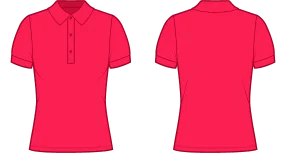
8. What ink is used for DTG?
DTG printers use water-based textile inks designed to be absorbed by the fabric, offering vibrant colours. These inks are eco-friendly and safe, ideal for various fabric types. Inkjet printers also use dye-based ink, which is water-based, biodegradable, and produces vibrant colours on t-shirts.
9. Does DTG printing last?
DTG prints have a long lifespan when cared for properly. Washing in cold water, using gentle detergents, and avoiding excessive heat when drying are key for maintaining quality. Factors like printing quality, fabric type, and garment care also influence longevity. However, properly processed DTG prints have excellent longevity.
10. What are DTG products?
DTG printing involves printing the design directly onto products like T-shirts, hoodies, hats, Pillow covers, totebag, and other apparel products using specialized inkjet printers.
Qikink Products for DTG Printing
11. How fast is DTG printing?
DTG printing is incredibly fast, making it perfect for on-demand or short-run orders. You can create high-quality designs in just minutes by loading your image and garment and hitting print. For example, You can print a 10×10 inch design on a t-shirt in one minute. Small orders take approximately 2 days to complete in DTG printing. This speed allows for quick product creation, ideal for capitalizing on new ideas or trends without heavy time or inventory investment.
12. What are the limitations or disadvantages of DTG printing?
Dark printed clothes may crack over time due to the need for a white background, where white ink is used, which can form colloidal objects. DTG printing is limited to relatively flat products and may not work well on uneven surfaces.
There are 3 major limitations of DTG printing:
Fusing or Coating Marks on the Product
DTG t-shirts undergo a pre-treatment process which leaves behind some marks, and noticeable stains on them. It’s due to the fusing and coating process before loading the t-shirts into the DTG machine.
Apparel Products Having A Weird Odor
The weird odour is generated by a fixation agent known as the pre-treatment liquid used for all DTG prints.
Design Color Matching Disclaimer
It’s important to note that they may look different on a real product than what you see on your computer monitor. Even if you have calibrated your monitor to a specific colour profile, various factors influence the final appearance of colours on a DTG-printed product.
13. Is direct to garment printing high quality?
Yes, direct-to-garment (DTG) printing offers high-quality for detailed designs and photorealistic images with multiple colours. However, the effectiveness of DTG printing can vary based on factors such as fabric type, garment colour, and printer expertise.
While DTG provides excellent results for full-colour designs, it may not be as cost-effective for large quantities compared to traditional screen printing methods. Overall, DTG printing is a valuable option for high-quality, on-demand customization products.
14. Is DTG cheaper than screen printing?

If you just look at the printing cost leaving behind the setup costs, DTG is around 5x costlier than screen printing. DTG setup costs range from ₹12 lakhs to ₹20 lakhs, while screen printing costs range from ₹4lakhs to ₹10lakhs. DTG printing is often more cost-effective for small quantities or designs with multiple colours due to no setup fees and suitability for intricate designs. However, screen printing may be more economical for bulk orders. Ultimately, the choice between DTG and screen printing depends on factors such as design complexity, quantity of garments, and budget considerations.
15. What are the disadvantages of DTG printing?
Dark printed clothes may crack over time due to the need for a white background, where white ink is used, which can form colloidal objects. DTG printing is limited to relatively flat products and may not work well on uneven surfaces.
- Relatively expensive
- Few limitations.
16. Is DTG printing good or bad?
DTG printing is good for:
- It’s good for producing high-quality.
- It’s a good choice for intricate designs that require multiple colours.
- It’s good for small orders or designs with multiple colours.
DTG Printing is not suitable for:
- DTG printing is more expensive for large quantities compared to traditional screen printing methods.
- DTG is not suitable for Mass Production.
- The ink and other consumables can be costly when you focus on printing dark colours.
Ultimately, whether DTG printing is good or bad depends on factors such as your specific printing needs, budget, and desired outcome.
17. Does DTG printing fade?
No, DTG prints can last a long time with proper care. Washing in cold water, using gentle detergents, and avoiding excessive heat when drying can help maintain their quality. However, factors like printing process quality and fabric type also play a role in longevity.
DTF printing is generally cheaper than DTG printing, with lower setup costs. DTG printing setup costs range from ₹12 lakhs to ₹20 lakhs, while DTF printing costs average around ₹2 lakhs to ₹12.5 lakhs, it’s depending on the design complexity.
19. Which is more expensive, DTF or DTG?
DTG printers are generally more expensive than DTF printers due to equipment Costs and ink Costs. However, the cost of DTF printers can vary depending on the features, quality, and brand.
20. Is screen printing faster than DTG?
Screen printing is faster for bulk orders due to the setup required for each colour, making it efficient for bulk production once stencils are created. For instance, if the order quantity is 1000 per design, it takes approximately 3-5 days to complete using screen printing. However, in DTG printing, it takes approximately 6-8 days to complete the same quantity.
Therefore, while screen printing is ideal for bulk orders, DTG printing offers speed advantages for on-demand and intricate designs.
21. How do you wash a DTG shirt?
- Before washing, turn the T-shirt inside out first.
- Should be careful not to wash in hot water(No more than 40 degrees),
- Do not soak in water for more than a half-hour.
- Do not use force to wash the printed parts during washing.
- Washing in cold water, using gentle detergents, and avoiding excessive heat when drying can help maintain their quality.
22. Is DTG printing hard?
No DTG printing is not a hard process, DTG is exceptionally efficient for small to medium print runs. There’s no need for screen setups or colour separations, which significantly reduces setup time. This makes it perfect for on-demand or customized printing.
23. Is there money in DTG printing?
The answer is “Yes,” but the longer answer is “You can increase your profits even more with multiple DTG printers.” Direct-to-garment printing requires less setup time than screen printing, saving you both time and money spent on labour.
You also increase your profits since you are able to start the printing process in a quicker period of time. DTG printing also gives you the option to do smaller orders with one design just as efficiently as a larger, more complex order with lots of colours.
Your ability to handle orders of various sizes and complexity means you are able to increase your bottom line for each quarter and the entire fiscal year.
24. What are the disadvantages of DTF?
- The printing process is simple, but the print feel is heavy and textured. Because of the fixing powder, there is a plastic, glossy, and less blended feel.
- It won’t be your ideal print technique if you wish to sell a premium quality product and provide your customers with a soft, blended, and comfortable feel.
- It is simply not as smooth and light as DTG printing.
25. How long do DTF prints last?

The lifespan of a DTF (Direct to Film) print can vary depending on various factors such as the quality of the print, the environmental conditions it is exposed to, and the quality of the ink used.
In general, DTF prints can last up to 2-3 years without noticeable fading or degradation. Also, High-quality, fade-resistant ink can help to prolong the life of the print.
26. Do DTF prints fade?
DTF printing can not fading upto 2-3 years. Proper storage and handling can help to prolong the life of a DTF print and ensure that it remains vibrant and high-quality for as long as possible.
However, some DTF prints can last up to 5 years or more if they are properly stored and protected from environmental factors such as sunlight, moisture, and heat.
27. Which is better: sublimation or DTG?
Both DTG and sublimation printing have their pros and cons. DTG printing allows for detailed designs without the need for screens, making it cost-effective for small orders, but it can be pricier for larger quantities and less durable than sublimation.
On the other hand, sublimation offers vibrant colours and durability but can be more expensive and less suitable for detailed designs. The best method depends on your specific needs, such as design complexity, budget, and turnaround time. Consider factors like the type and quality of the design, the material, price, and turnaround time when making your decision.
28. Is DTG better than screen printing?
DTG printing is better for:
- It’s better for small orders or designs with multiple colours.
- It produces high quality.
- It’s a better choice for intricate designs that require multiple hues.
- DTG’s strengths are to be leveraged to launch new designs in the beginning to a new audience.
Screen printing is better for:
- Screen printing is better for bulk orders.
- Cost-effective for large quantities.
- Screen printing options scale the operations with high-volume production and dispatch with good margins.
Ultimately, the choice between DTG and screen printing depends on factors such as design complexity, quantity of garments, budget constraints, and desired quality.
29. What material is direct to garment printing?
DTG printing can be used to print on a variety of materials, including cotton, polyester, and different blends, making it suitable for a wide range of garments.
30. Is DTF printing long-lasting?
Yes, it’s long-lasting, DTF printing involves three layers of print, which is heat-pressed on any garment, making the print last longer. It is also fade-proof and does not crack when stretched or pulled.
31. Is DTG printing profitable?
Yes, DTG printing can be profitable due to its ability to offer unmatched precision, vibrant colours, and versatility in printing on various fabric types.
Its exceptional print resolution and colour accuracy make it a valuable tool for businesses and individuals seeking to create custom, high-quality printed garments, which can attract customers and drive sales.
Start DTG printing for your clothing store with Qikink
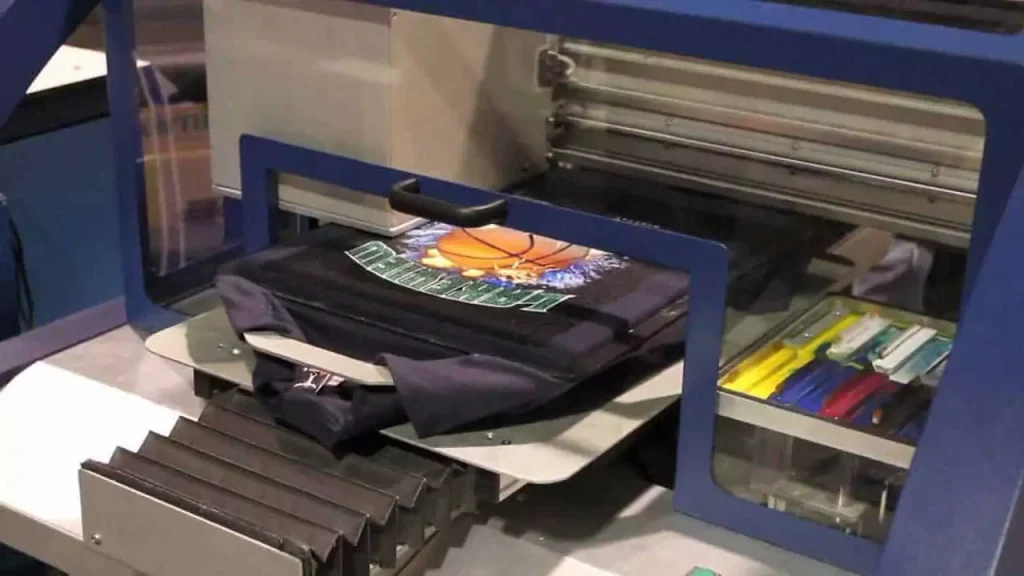
Dtg Kornit tshirt printing machine
Leverage DTG’s strengths to introduce new designs to a fresh audience. DTG printing offers high-quality photo printing for T-shirts, hoodies, polo shirts, and more. Qikink utilizes top-of-the-line Kornit and Brother DTG printers for superior results.
With Qikink, We offer various products on Direct to garment (DTG) printings.
Let’s Explore the profitability of DTG printing for your clothing store with Qikink’s print-on-demand business.


